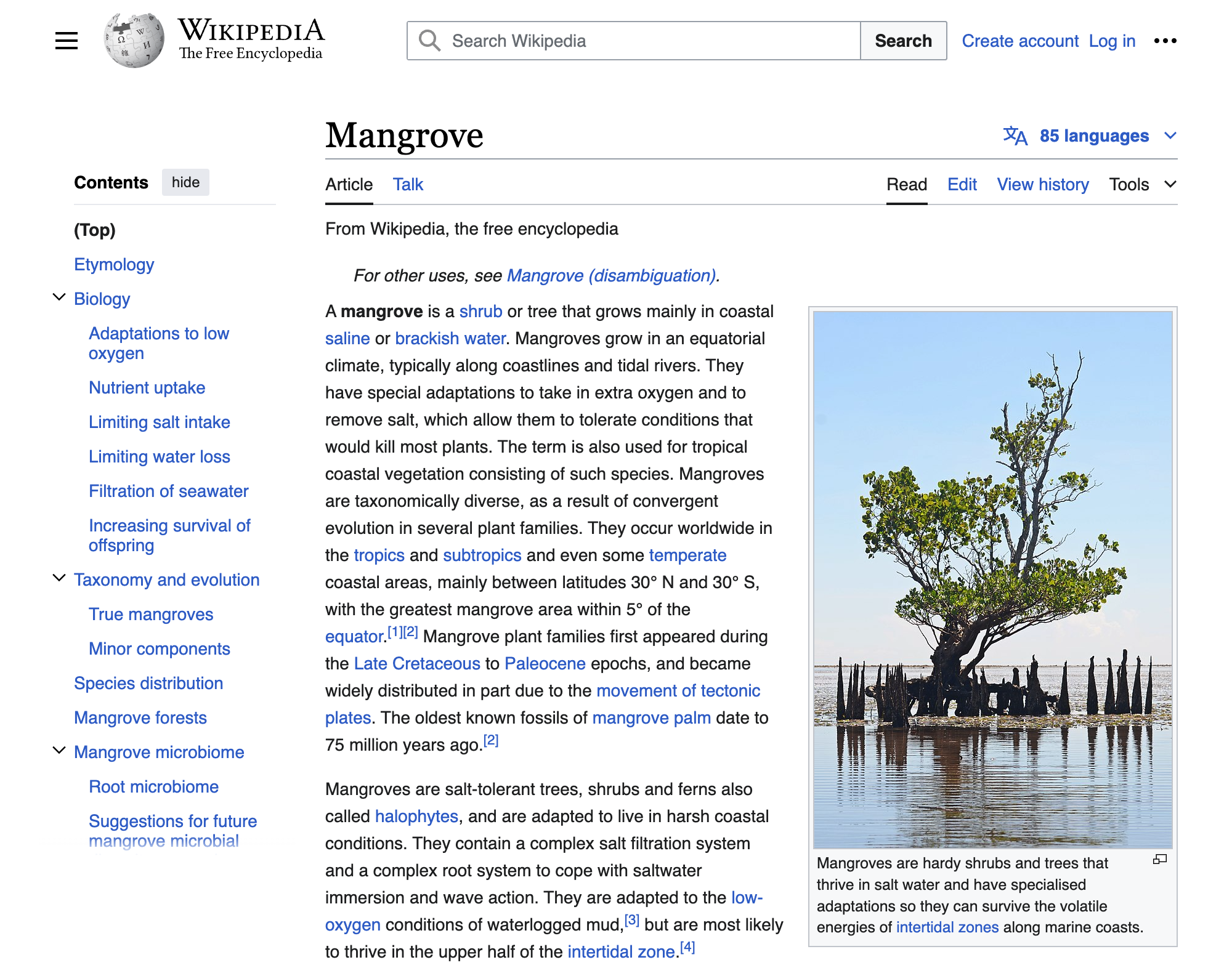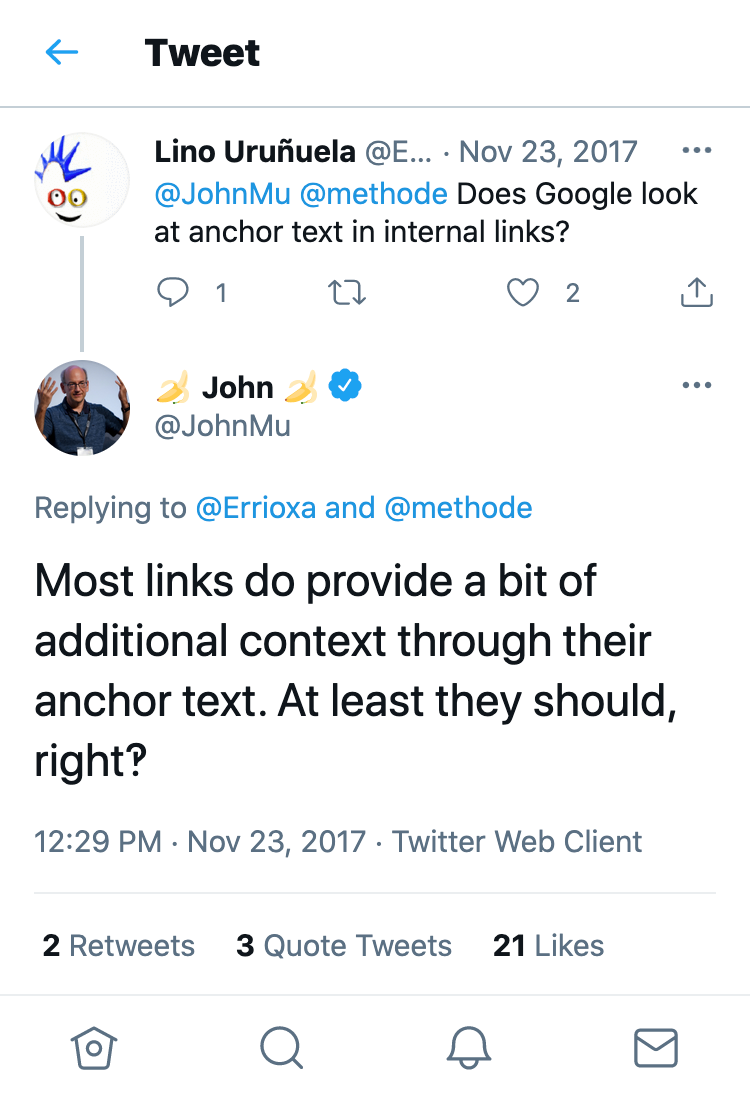Not all links are the same. But what do the terms “internal link”, “crosslink” and “deep link” mean and what significance do different types of links have for SEO?
Discover how SISTRIX can be used to improve your search marketing. 14 day free, no-commitment trial with all data and tools: Test SISTRIX for free
Links represent the road network on the Internet on which search engine crawlers and users move from one content to the next.
If they didn’t exist, every website would be isolated. This would make navigating the web much more tedious and degrade Google to a huge reference book of URLs.
For search engine optimisation, however, it is not only important to know what role links play, but also what distinguishes different types of links. Here we explain what the terms “internal link”, “crosslink” and “deep link” mean.
We also give you tips on how to use different types of links for a positive user experience and a better ranking and what you should avoid.
Internal Links
Internal links are links that refer to a subpage or resource (e.g. an image) within a domain. They are therefore the counterpart to external links, which are links between different domains.
Why Internal Links Are So Important
Many website operators concentrate on external links and attach little importance to internal links. As a result, they waste valuable potential. This is because skilful internal linking fulfils an important function on two levels:
- For search engines: Search engine crawlers crawl and index subpages of a domain using internal links. They also learn more about the relevance of content and thematic connections through links. In the worst case scenario, missing links mean that a page does not exist for the search engine.
- For users: Site visitors also orientate themselves with the help of links – starting with those in the menu. The better the internal linking, the faster they find what they are looking for, the more satisfied they are with your site and the more likely they are to return.

Wikipedia is a prime example of skilful internal linking.
Internal Links and SEO
Internal links allow you to distribute the link power of external links to different subpages – depending on how important they are.
You also ensure that visitors quickly get to where they want to go through skilful linking. In most cases, this reduces the bounce rate and increases the number of conversions.
To summarise, intelligent internal linking ensures a better ranking and a positive user experience.
This is important:
- Use central keywords for anchor texts, unlike with backlinks.
- Integrate internal links in the main content.
- Make sure that they make sense thematically.
- Favour a flat link hierarchy for websites.

You can find more information and tips on how to optimise internal linking in our article “Optimise Internal Linking“.
Tip: With good internal linking, you can create a second navigation in the main content. Users then no longer have to return to the navigation to find their way to further content.
Deep Links
Deep links lead directly to the subpage of a domain. They link into the “depth”. In contrast, surface links link to the surface or the homepage of a domain. From there, visitors must first click through to the desired content.
For clarification, here is a surface link:
<a href="https://www.sistrix.com/">SISTRIX Homepage</a>
and a deep link:
<a href=" https://www.sistrix.com/tutorials/seo-strategy/internal-linking/">Article on internal linking</a>
Internal and External Deep Links & Their Importance for SEO
Internal links are mainly deep links. We have already mentioned the advantages of these:
- They help users find their way around and thus increase dwell time and user satisfaction.
- They make it easier for Google to understand the structure of pages and the relevance of individual subpages.
- With their help, link juice can be distributed in a targeted manner.
There are also external deep links, i.e. backlinks that do not lead to the homepage of the domain www.examplepage.com, but to the subpage www.examplepage.com/ricecooker.
External deep links have the following advantages:
- Visitors are taken directly to the appropriate subpage and do not have to “click through” to it first. In this sense, deep links are more “logical” than surface links.
- Deep links to a landing page increase the conversion rate.
- They can improve the ranking of subpages and indirectly the ranking of main pages. This is especially true for long-tail keywords.
Having backlinks that lead to subpages is therefore generally useful. However, there are a few things to bear in mind so that it doesn’t backfire.
There is a risk that Google will categorise deep linking as link spam and penalise the subpage in question.
You can reduce the risk by ensuring that links on the homepage and subpage are in a reasonable ratio to each other when building links and that you don’t have two backlinks that lead to the homepage while 50 lead to a specific subpage.
After all, the following applies here once again: Relevance is what counts. Good deep links lead visitors directly to their destination and not just to any page.
Note: Affiliate links are also deep links. The link contains an additional code through which the retailer recognises the affiliate.
Caution: Legal Aspects of Deep Links
Google penalties are not the only possible consequences of deep linking. In Germany, for example, the Federal Court of Justice has ruled that deep links do not automatically constitute an infringement of copyright.
However, a later court decision stated that deep links are definitely a copyright infringement if access to the target page is restricted by protective measures. A session ID already counts as such. Deep linking can also be a legal grey area in other respects.
Tip: If you want to be on the safe side and make sure that a deep link is legally compliant, ask the owner of the website in question for permission.
Crosslinks
A crosslink is a link to a website that already has a backlink to the other site. The creation of crosslinks is referred to as crosslinking.
Crosslinking can have a positive effect on the ranking of the pages involved – but only if it is done in moderation. Otherwise, as with deep links, there is a risk of the opposite effect occurring.
Crosslinking and SEO – Benefits and Risks
Crosslinking plays an important role in Offpage optimisation:
- It increases the link popularity of the pages involved.
- It has a positive effect on the ranking.
However, this effect is quickly reversed if you crosslink too intensively. You should be particularly careful if page A links to page B and page B links to page A. There is a high risk that Google will categorise this as manipulation.
The same risk exists if there is a high density of links and a rapidly growing number of crosslinks. Ultimately, a conspicuously large number of crosslinks that make little sense also have a negative impact on the user experience.
Therefore: Make sure that crosslinks make sense thematically, use them carefully and avoid the impression of a pure link exchange. It can also have a negative effect on the ranking if both websites rank for the same keywords. Similar is good, too similar is not.
Conclusion
Internal and external links are decisive factors in search engine optimisation. You can utilise their potential more easily if you know the differences between different types of links.
You can improve your ranking and user experience in the long term through skilful internal linking, the careful use of deep links and targeted crosslinking – without having to fear negative consequences.
Test SISTRIX for Free
- Free 14-day test account
- Non-binding. No termination necessary
- Personalised on-boarding with experts